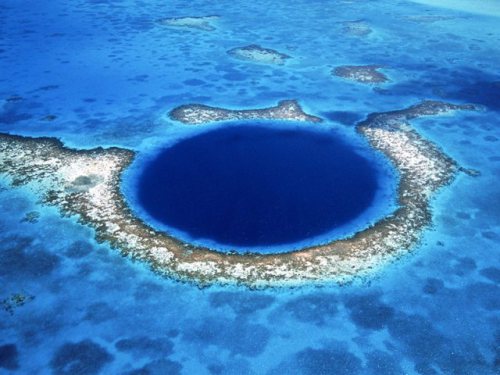Earthquakes
Earthquakes/Tsunamis
Overview
Aside from artificial harm to Coral Reefs, natural events such as hurricanes, cyclones, earthquakes and tsunamis cause significant damage to coral reefs. The wave activity caused by earthquakes and tsunamis cause extreme mechanical damage to corals, breaking apart their structures. Branching corals are usually the most succeptible corals to damage from storms and wave activity, because the ends of the corals break off very easily. However, natural events rarely cause the huge wipe-out of entire coral reefs like human-induced events do. Eutrophication and temperature rise caused by nutrient runoff and global warming can cause the complete destruction of miles and miles of coral reefs [1]
Types of Damage
1. Mechanical Damage: direct damage to corals and coral reefs occurs mainly as a result of the mechanical forces extered by the storm-induced waves and currents [2]
2. Damages Due to Changes in Sedimentation Processes: mechanical damage to coral reefs and wave action during tsunamis and earthquakes causes an increase in coarse sedimentary material from broken corals and uprooted soft benthic organisms as well as a redistribution of existing sediments [3]
3. Damage Due to Increased Turbidity: one of the main requirements of healthy coral reefs is clear, clean water. Earthquakes and tsunamis cause sediment to mix into the water, decreasing the amount of light that can reach the already damaged corals [4]
4. Damage due to Decreased Salinity and Imbalance of Nutrients: extreme flooding caused by tsunamis can bring into the water nutrients and waste from the land surrounding the corals, causing the imbalance of nutrients in the water and decreased salinity. Corals also require a specific nutrient level, pH level and salinity to survive. Tsunamis and flooding can have the potential to severely alter all of these factors [5]
5. Removal of Benthic Assemblages: earthquakes and tsunamis often remove benthic assemblages and restructure communities as seen by the Belizian Barrier Reef Earthquake in 2009
History of Earthquakes in the Caribbean - Important Case Study
In 2009 a powerful magnitude 7.3 earthquake hit the Caribbean causing widespread damage to the Belizean Barrier Reef by destroying 10 benthic assemblages and damaging one. This caused an extreme change in the coral reefs ecology and community causing widespread damage and dieoff within the reef. Two dominant species of corals were completely eradicated and sponges began to become more prominent. Scientists estimated the recovery time of up to 2000 years. [6]
A shot of a Belizian Reef:
History of Tsunamis in the Caribbean - Important Case Study
The earthquake and subsequent tsunami of 2004 severely impacted coral reefs in the Indian Ocean, especially coral reefs lying along the Nicobar Islands. Damage was recorded at 14 different sites along the islands following the earthquake and tsunami. Acropora coral significantly declined around the area. Algal cover also increased in the areas that experienced the highest coral mortality, possibly indicating a shift from a coral dominated community to a permanent algal dominated community. Patankar, Vardhan1,2, D'Souza, Elrika1,2, Kumaraguru, A. K.2, Arthur, Rohan1
- Looking Forward:
- Restoration of Previously Damaged Reefs
- role of ecological history
- Return Times of Natural Disasters in the Future
- Status of Caribbean Coral Reefs in 100 Years
- Restoration of Previously Damaged Reefs
References: [1] Marion McClary (Topic Editor) "Threats to coral reefs". In: Encyclopedia of Earth. Eds. Cutler J. Cleveland (Washington, D.C.: Environmental Information Coalition, National Council for Science and the Environment). [First published in the Encyclopedia of Earth August 25, 2008; Last revised Date July 14, 2012; Retrieved February 25, 2013 <http://www.eoearth.org/article/Threats_to_coral_reefs?topic=49513>
[2-5] Harmelin-Vivien, ML. The effects of storms and cyclones on coral reefs: a review. Journal of Coastal Research [Internet]. 1994 [cited 2013 Feb 26]; Special Issue No. 12: 211-231. Available from: http://www.istor.org/stable/25735600
